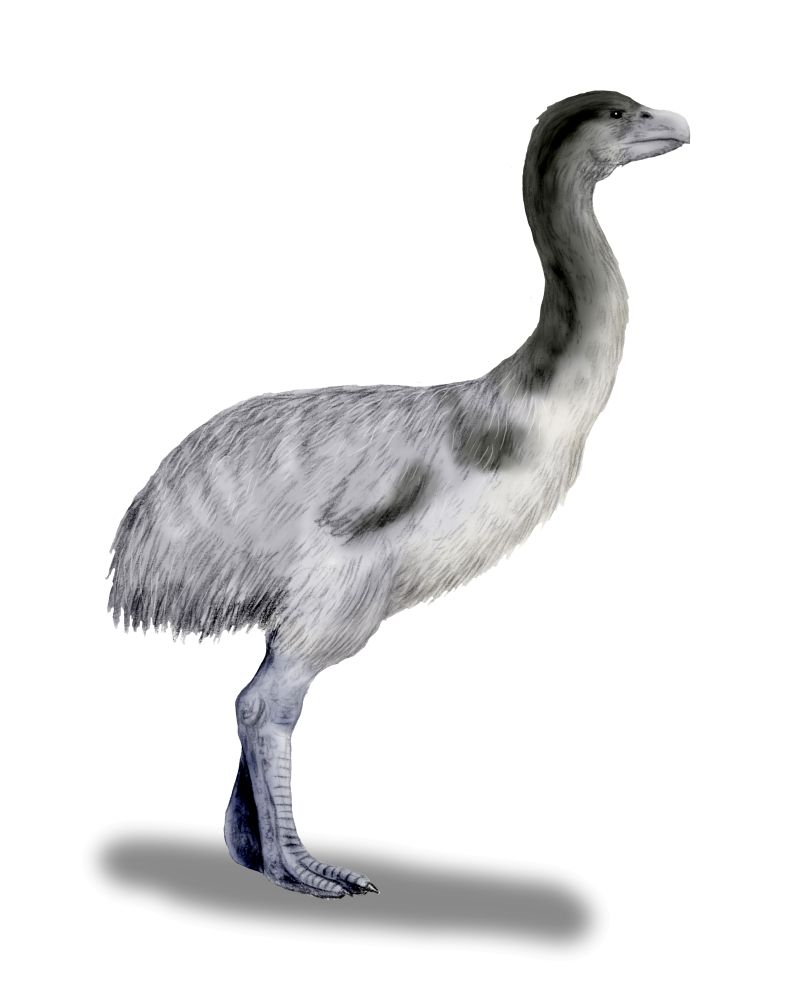Genyornis newtoni
thunder bird / mihirung paringmal
Genyornis newtoni was an extinct species of large, flightless bird that lived in Australia during the Pleistocene until becoming extinct about 50,000 years ago. It has been found in South Australia, Western Australia, Queensland and New South Wales where it inhabited a variety of habitats, but especially those that were more open. Genyornis was the last known member of the extinct flightless bird family Dromornithidae, which had been part of the fauna of the Australian continent for over 30 million years.
It was a heavily built bird, standing over 2 metres tall and weighing up to 240 kilograms. It had small wings and solid hind limbs. Several features of its morphology, including a lack of a hooked beak and an absence of recurved claws on its feet, indicate it had a herbivorous diet. This is supported by amino acid analysis of its eggshell and some Genyornis fossils being found with gastroliths in the gizzard region. These stomach stones are retained in the gizzard of some herbivores to grind plant matter and are absent in carnivores.
See below to view more Genyornis newtoni fossils, including an entire right hind limb.
Specimen number: FU 2763
Geological age: Pleistocene
State/territory: South Australia
Locality: Lake Callabonna
